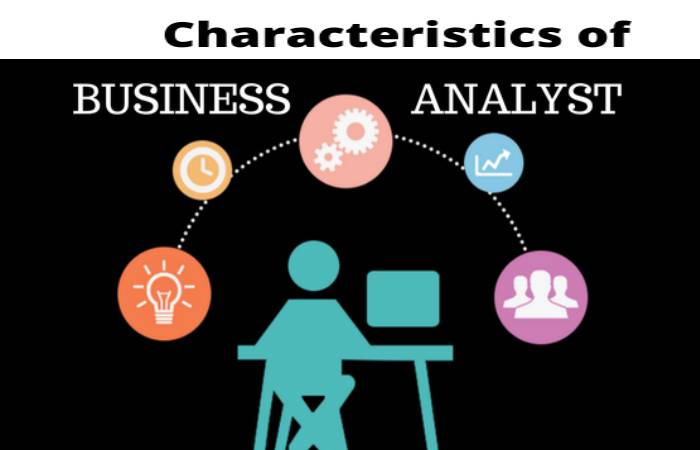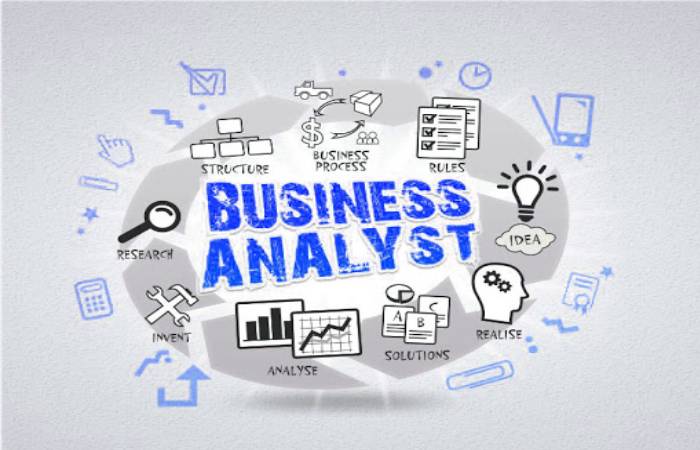Table of Contents
Business Analyst Definition
The business analyst is a professional with managerial skills and technical knowledge to build computer systems and is responsible for linking both fields. How is the job of this professional?
And also, business analysts work at all levels of the organization. They can be involved in everything from defining strategy to creating the company’s architecture to taking a leadership role in determining objectives and requirements.
For programs and projects and support the continuous improvement of its technology and processes and be a facilitator of these for the organization.
Characteristics of a Facilitating Business Analyst

The implementation of this neutrality is a complex combination of twelve personality traits that the facilitating BA has to lead the meeting without pronouncing the solution:
- The egalitarian. Set meeting rules to ensure that all attendees are equally respected and valued.
- The orchestrator. Generate participation through eye contact and ask for the contribution of all attendees. Establish a positive atmosphere through behaviour and promote face-to-face dialogue.
- The focused one. Keeps the focus on the agenda. Use charts to identify concerns, issues not on the plan, and unresolved issues. And also, keep track of time, eliminate off-topic conversations, and ask for contributions.
- The listener. Use active listening and get the contributions of the attendees: faces participants and displays attentive body language. And also reaffirm opinions for any resulting clarification. There is no one-size-fits-all solution. That is why there are numerous methods, tools, strategies and areas of knowledge.”
- The questioner. Guide the meeting by asking questions rather than offering opinions.
- The paraphraser. Make sure attendees know they have been heard by using their own words for clarification.
- The summarizer. Provide summaries during the meeting to track meeting progress.
- The synthesizer. Form innovative ideas through the combination of attendee feedback and consensus-building.
- The validator. Confirm agreements with attendees with an accurate record of their contributions and contracts.
- The controller. Recognize open conflict and work with assistants who are interested in solving problems with each other.
- The documenter. Highlight contributions in any visual medium using the actors’ own words to emphasize their ownership. And also ensures that the results of the meeting are documented and distributed to attendees.
- The inspector. Ask attendees for feedback on the pace, focus, timing, process, and content of the meeting.
The Role of the Business Analyst
- Business analysis refers to the study of business, their needs, requirements and processes and develops solutions that help solve problems encountered in the research.
- And also, business analysts’ solutions can range from policy and process improvement to organizational change or strategic planning and development.
- In recent years, there has been a bang in demand for business analysts within the ICT industry. They are responsible for connecting the user with the development team. And also, groups that have not always been easily understood by having very different experiences.
- The business analysts IT (also known as IT Business Analyst ) are professionals with expertise in Document management systems and information technology.
- And also, the business analyst needs to understand the problems that users face in their day-to-day life while also understanding how the application is developed.
- They ensure the quality of IT services while analyzing business and user requirements through data analysis.
Responsibilities of Business Analyst

A business analyst is responsible for identifying opportunities for improvement in existing operations and processes in a company. They are in charge of analyzing the users’ needs and requirements.
He will answer the technical team’s questions to ensure that the final program or application meets the user’s requirements during development. That is, it is also responsible for the validation and acceptance of the final product.
Business Analyst Responsibilities:
- Execute data analysis projects and user needs;
- And also, Evaluate processes based on data analysis;
- Identify current and future business processes;
- Help companies determine how their work will need to change to support the future;
- And also, Maintain the quality of IT products and services;
- Deliver system design elements, including data migration rules, business rules, wireframes, or other detailed deliverables;
- Help develop training materials and literature to speed up processes;
- Documentation requirements for making data-driven recommendations;
- Facilitate the negotiation of conditions between multiple stakeholders.
- Assistance in acceptance and integration tests;
- Budget execution and business risk analysis;
- And also, Project management and preparation of project plans;
- Reporting to stakeholders and business leaders;
- They need knowledge of data analysis and data trends and understand how the systems and the product work.
Requirements and Knowledge of the Business Analyst
Requirements and knowledge of the business analyst:
- Ability to understand and determine objectives;
- Strong perception skills to see the big picture of business processes and systems.
- Good knowledge of presentation tools and programs to present results and plans;
- Experience in the use of demonstrating and design tools in business or IT projects (ARIS, EA) and UML;
- And also, Experience with Business Analytics tools – Microsoft Access, Tableau, Google Analytics;
- Knowledge of SQL – not crucial but can benefit;
- Experience in Agile, Scrum and other competitive methodologies;
- Excellent in time management and ability to work autonomously;
- Good communication and presentation skills;
- Strong leadership skills;
- And also, Analytical thinking and problem-solving.
Conclusion
The business Analyst facilitator has a complex role and may unintentionally lose neutrality only with a comment from one of the attendees such as: “Good idea!
This comment is essentially a judgment and may cause the passivity of other attendees. And also, experts’ opinions in the field can cause risk scenarios such as loss of participation and trust.
There is no one-size-fits-all solution. That is why there are numerous methods, tools, strategies and areas of knowledge.
Every company and every sector is different. What some people see as advantages in the past could be perceived as disadvantages and vice versa. Flexibility and adaptability have always been strengths of the best business analysts – regardless of the reporting structure or corporate hierarchy.


